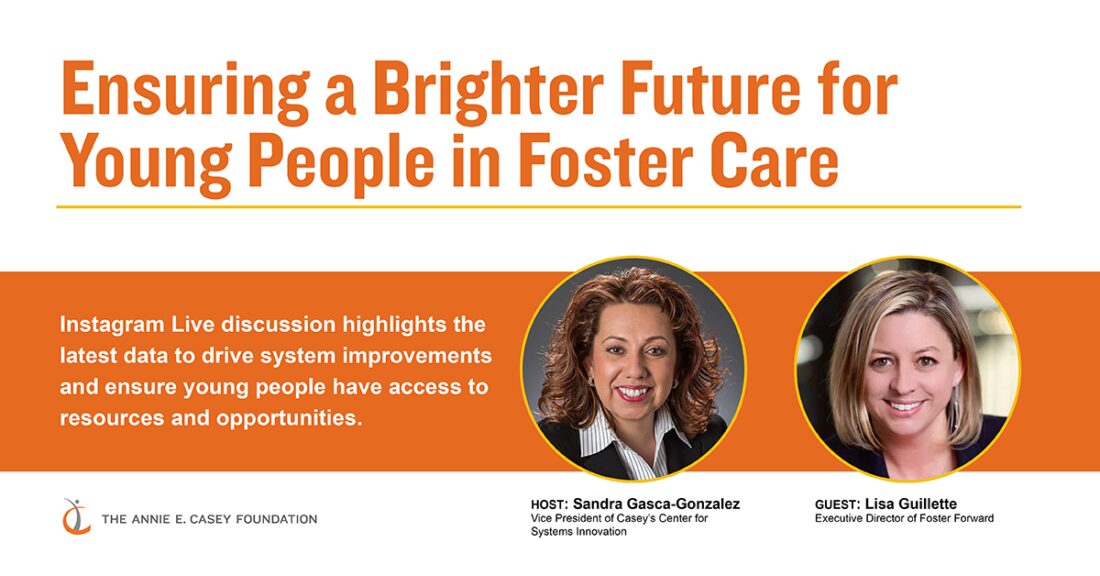An Instagram Live Conversation: How Foster Care Data Can Drive Solutions

Child welfare systems are finding families for fewer than half of teenagers and young adults in foster care. How can systems better support permanence for older youth to improve their outcomes and equip them to become thriving adults?
To explore this question, Sandra Gasca-Gonzalez, the Annie E. Casey Foundation’s vice president of the Center for Systems Innovation, led an Instagram Live discussion with guest Lisa Guillette, executive director of Foster Forward.
During the conversation, they discussed approaches that give young people the power and opportunity to build lifelong connections that work for them. In addition to her professional experiences, Guillette shared her fostering journey with her daughter and how it has further inspired her advocacy, offering that, “As somebody who’s been on both the professional and personal side, it really is about giving people power and agency to make the determinations that are right for them.”
WATCH THE CONVERSATION ON INSTAGRAM
Fostering Youth Transitions 2023
As May is National Foster Care Month, the lively conversation also covered insights from the Foundation’s latest brief, “Fostering Youth Transitions 2023: State and National Data to Drive Foster Care Advocacy.” The publication examines 15 years of foster care data, the experiences of teenagers and young adults in and exiting foster care and recommendations for child welfare systems and policymakers. To offer ideas on how states can think about their own foster care systems, Gasca-Gonzalez and Guillette discussed Rhode Island’s data and the approaches that have helped young people and families there. For example, Providence-based Foster Forward builds housing for young people who have aged out of care and runs a community shop where foster families can pick up new and gently used clothing at no cost.
They also discussed SOUL Family, a proposed permanency option that allows young people to make legal connections with caring adults without severing their legal ties with birth parents and siblings. This would help to ensure young people exit foster care with a support system as they navigate the transition into adulthood.
The conversation explored other topics such as strategies for expanding kinship care and strategies for keeping siblings together. They discussed the struggles that families are facing as a result of the COVID-19 pandemic, particularly when a child is removed due to neglect. Neglect often relates back to poverty, so it is important to ensure there are community support services and other resources so all families have what they need. Guillette emphasized the need for more investments across communities, so families across the country will not continue to struggle.
Gasca-Gonzalez discussed how the pandemic became an opportunity for the child welfare system “to calibrate itself a different way and… have a different mental model” about family separation. “When you look at the pandemic data, we saw a remarkable drop in the number of children coming into foster care because we were in a massive health crisis. It wasn’t safe to remove children. Workers and systems had to take a really hard look at… are kids safe? Do we really need to separate them from their families or do we just need to provide a different kind of resource to keep families together? Let’s give them the support they need in the home so that they can stay together.”





